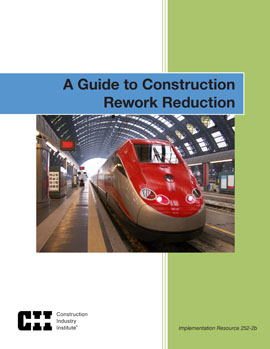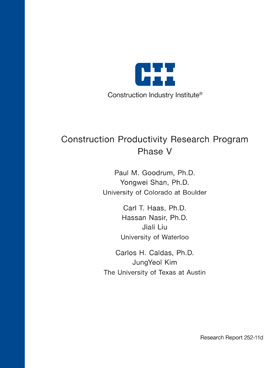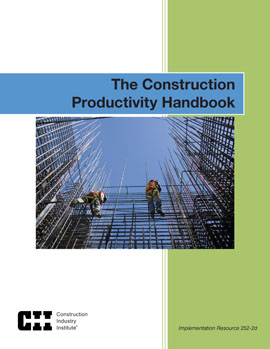
A Guide to Construction Rework Reduction
In an ideal project environment, the implementation of a best practice like quality management would result in zero rework, yet experienced project personnel understand that certain forces remain outside of their control. Indeed, on a typical project, rework costs between 2 percent and 20 percent of a project’s contract amount. Reducing rework improves project performance, and reducing rework labor hours translates directly into improved labor productivity. In 2003, CII launched Research Team (RT) 203 as part of its effort to reduce construction rework. The team identified and described the major factors related to rework potential, and formulated a self-assessment opportunity checklist to strengthen corporate construction quality processes to reduce field rework.
In spite of this practical approach to reducing rework, efforts to reduce rework are still often impeded by a perception that rework is beyond the control of the contractor, or by a failure to implement a rework reduction program (RRP), and by disincentives to report rework when a RRP is deployed. RT 252 formulated the following guidance for addressing these issues:
- an explanation of how to deploy an RRP
- a top-ten list of rework reduction ideas
- innovative approaches to incentivizing rework reporting.
An RRP is first and foremost a measurement system for monitoring the magnitude and impacts of field rework. Only when organizations begin to measure—and thus really understand—the impact of rework on their projects, do they fully appreciate the economic benefits and productivity improvements that reducing rework makes possible. An RRP operates by managing a continuous improvement loop with four processes:
- rework tracking and cause classification
- evaluation of rework and its causes
- corrective action planning
- integration of changes into the total management system.
To validate these RRP guidelines and processes, RT 252 investigated an RRP already being implemented in the field along these guidelines. The team analyzed thousands of project records over a three-year time period to isolate impact trends on rework in terms of frequency, cost, and labor hours. The results indicate that a properly designed and implemented RRP can significantly reduce rework.
The overall mission of RT 252’s six-year research program is to improve construction productivity. To achieve this mission, the team measures three aspects of productivity: 1) labor productivity (hours/unit), 2) direct work rate, and 3) rework rate. The team has pursued four research thrusts in its development of CII products to improve project productivity in terms of these measures:
- developing a best productivity practices implementation index and guide to productivity improvement
- identifying high-impact productivity innovations
- using the CII BM&M database to uncover new relationships between CII practices and productivity
- developing tools such as “activity analysis” that can be used to improve direct work rate.
This RRP guide is a product of the innovation thrust. Its place in the larger productivity research program is mapped out in more detail in RS 252-1b, Construction Productivity Research Program – Phase III.
IR252-2b, A Guide to Construction Rework Reduction
Outlines a model rework reduction program that manages a continuous improvement loop with four processes:
- Rework tracking and cause classification
- Evaluation of rework and its causes
- Corrective action planning
- Integration of changes into the total management system



